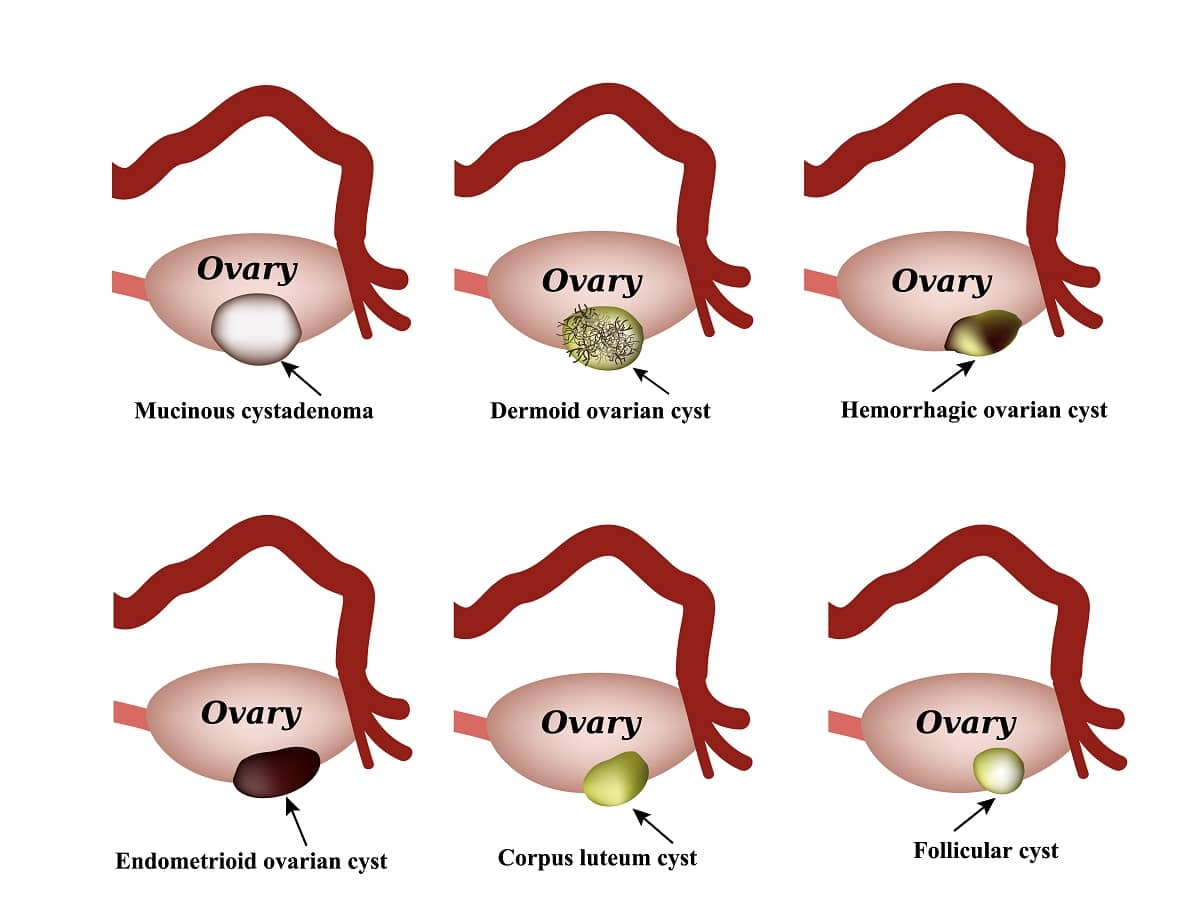Ovarian cysts are one of the most common findings in women of reproductive age. The majority of women I see in the office with ovarian cysts complain of a combination of menstrual irregularities, pain with menstruation or intercourse, and abdominal distention. In some cases, the pain and bleeding is so severe that land a person in the emergency room and at times surgery. Let’s review some common types.
Follicles
Follicles are cysts ovaries make on a monthly basis as they prepare to ovulate or release an egg. These cysts are normal and non-cancerous. However, at times they may cause pain. Sometimes during intercourse one of these cysts or follicles, as we call them, pop and release either blood or fluid into the abdomen causing pain. The pain can be so severe that it may be confused with appendicitis. Follicles are easily diagnosed with ultrasound and usually with pain management resolve on their own.
Polycystics Ovarian Syndrome or PCOS
Polycystic ovarian syndrome or PCOS is when ovaries make too much male hormone or androgens. Elevated androgen levels disrupt the delicate ovulation cycle and result in menstrual irregularities. Three criteria are required for PCOS diagnosis; elevated androgen levels, polycystic appearing ovaries on ultrasound, and irregular menstruations. Typically, women with PCOS complain of increased acne, increased facial and body hair, male pattern baldness, weight gain, and in long term are at increased risk for infertility, diabetes, uterine and breast cancer, and heart disease. Treatment is usually through suppressing the excess androgen production and usually is very successful. I enjoy taking care of patients with PCOS and fertility issues. Treatment can be challenging, but usually very successful and rewarding.
RELATED: What is Polycystic Ovarian Syndrome or (PCOS)?
Endometriomas
Endometriomas are formed by endometriosis implants on the ovary. Endometriosis is displacement of endometrial glands from inside the uterus to the internal pelvic cavity and organs. Once these glands land on the ovary and are stimulated during each menstrual cycle by the estrogen from the ovaries, they grow and produce bloody ovarian cysts. We call these endometriomas. This condition typically causes pain prior to menses and gets progressively worse with age. In severe cases patients visit emergency rooms frequently for pain management. Also, many women with chronic pelvic pain suffer from endometriosis. Endometriosis may also scar internal reproductive organs causing fertility problems. Endometrioma can be seen on ultrasound however endometriosis can only be diagnosed by evaluation of the internal abdominal cavity using a special surgical instrument called laparoscope. This operation is done through a small umbilical incision under general anesthesia. Because of my expertise in laparoscopic surgery endometriosis treatment has become a large part of my practice.
Dermoids
Dermoids, are primarily diagnosed in young women and originate from undifferentiated cells in the ovary. After puberty these cells multiply and become hair, skin, bone, and other tissue within the ovary. Dermoid cysts are surgically removed once they grow and cause pain, usually through laparoscopy.
RELATED: Can Endometriosis Become Cancer?
Borderline and Cancerous Cysts
Borderline and cancerous cysts of the ovary are rapidly growing and sometimes invasive tumors that are difficult to diagnose in early stages. The rate of ovarian cancer is 1/3200 women and it is more common after menopause. Women with a history of breast and ovarian cancer are at increased risk. Genetic testing in women with a strong family history is recommended to determine their risk level. In women determined to be at high risk of cancer close observation and prophylactic surgery has been helpful in preventing the occurrence of cancer. No method of screening for early diagnosis of ovarian cancer in the general population has been identified.
Ovarian cysts are common and varied. Early diagnosis and treatment are crucial in avoiding medical issues in later years. A complete medical history, pelvic exam, pelvic ultrasound, and blood test are all simple first steps. So, visit your gynecologist.
Schedule an appointment with Dr Michael Tahery at the Glendale office or the West Los Angeles office to find out more about ovarian cysts and the treatment options available.
